Log in or Sign up
You are using an out of date browser. It may not display this or other websites correctly. You should upgrade or use an alternative browser .

Why don't starships automatically use maximum warp?
Discussion in ' General Trek Discussion ' started by Soong-type Android , Jun 2, 2020 .
Soong-type Android Captain Captain
Why do say Picard or Janeway order a seemingly arbitrary warp number to go somewhere? What difference does it make? Why not just use maximum warp?
1001001 Serial Canon Violator Moderator
Do you drive your car at maximum speed no matter where or how far you're going?
Timo Fleet Admiral Admiral
Whenever we see ships go real fast, they are on the verge of blowing up from the effort. So it's a risk-benefit analysis, and it's the CO's job to do that sort of stuff. Should we get there faster but arrive crippled? Should we get there so fast that we're all dead when we, well, don't get there? Should we be fashionably late? Perhaps similar logic dictates why they never raise shields until fired upon. FWIW, real-world warships basically never move at maximum speed. The exception sometimes being nuclear vessels where fuel consumption is independent of speed, but even those generally aren't in any hurry. For a gasoline-guzzling vessel, a top speed of 25 knots probably means puttering along at 18 kt unless there's a truly dire emergency or the President-for-life of the People's Benevolent Republic himself is watching. Timo Saloniemi
1001001 said: ↑ Do you drive your car at maximum speed no matter where or how far you're going? Click to expand...
valkyrie013 Rear Admiral Rear Admiral
Well there's atleast 2 "Maximums".. Maximum cruising speed and maximum warp capable.. Max Cruse is what the ship can do for X amount of time before they have to slow down because of wear and tear, fuel economy, etc. where Max warp is how fast you can go period, but usually like 12 hour or less before stuff starts to break, and even after they probably have to replace parts etc. so have to be down for like 24 hours before they can even go to any warp. Why they have "Cruise" Speed, max efficiency, low on maintenance, can go for weeks, even months without stoping if necessary. Also depends on how fast you want to get there, if your in no hurry, why tax the engines?
Soong-type Android said: ↑ Of course unlike a car the fictional starship has the benefit of operating in three dimensions in an infinite area where the laws of physics don't apply to it. Click to expand...
fireproof78 Fleet Admiral Admiral
1001001 said: ↑ The laws of physics don’t apply in space? Click to expand...
Finn Bad Batch of TrekBBS Admiral
Soong-type Android said: ↑ Of course unlike a car the fictional starship has the benefit of operating in three dimensions in an infinite area where the laws of physics don't apply to it. It begs the question of how long a starship could travel at warp 9.9 without blowing up. Click to expand...
Kor Fleet Admiral Admiral
It takes more fuel, it puts a harder strain on the ship, etc., etc. Kor
Acceptable risk depending on the situation. "She'll fly apart!" "Fly her apart then!!!"
Soong-type Android said: ↑ Bad phrasing on my part. I meant the laws of physics don't apply to a starship in how it can travel FTL speeds in space and the effects on it etc. That makes sense, but I wonder what the in-universe reasoning is for specifically picking what warp factor to go by. How does Picard suddenly decide in a particular situation to go at warp 1 on one occasion and warp 4 on another occasion? It seems random. One of those quirky Star Trek things I suppose. Click to expand...
Makes sense.
Tenacity Rear Admiral Rear Admiral
The tech manual said that when at max speed replicator use had to be reduced or suspended. Picard didn't want to deal with the crew not being able to ordred replicator meals, pick at them a few times, and then leave most of the food at the table.
Angry Fanboy Captain Captain
The car analogy is perfect - driving at full throttle increases consumption of fuel, wears out parts quicker, puts more strain on the engine overall leading to increased risk of failure, increased maintenance and a reduced lifespan. Broadly speaking all these things would apply to a starship's engines as well - so maximum warp is only used when necessary and a lower cruising speed used at all other times.
Qonundrum Vice Admiral Admiral
Lord Garth Admiral Admiral
In "Pathfinder" (VOY), they say Voyager was travelling an average of Warp 6.2. The fastest it could go was Warp 9.975, although we never actually saw Voyager go that fast. So it seems like Warp 6 is the ideal cruising speed, where it's fast enough to get you somewhere but not so fast that things start to fall apart.
NewHeavensNewEarth Commodore Commodore
Because if you do high warp non-stop, the brother & sister duo will appear and make you feel bad about it. And then it will instantly be completely forgotten about after the credits roll.
NewHeavensNewEarth said: ↑ Because if you do high warp non-stop, the brother & sister duo will appear and make you feel bad about it. And then it will instantly be completely forgotten about after the credits roll. Click to expand...
Lord Garth said: ↑ "Give a hoot! Don't pollute!" Click to expand...
- Log in with Facebook
- No, create an account now.
- Yes, my password is:
- Forgot your password?
- Search titles only
Separate names with a comma.
- Search this thread only
- Display results as threads
Useful Searches
- Recent Posts
- Skip to main content
- Keyboard shortcuts for audio player

- LISTEN & FOLLOW
- Apple Podcasts
- Google Podcasts
- Amazon Music
- Amazon Alexa
Your support helps make our show possible and unlocks access to our sponsor-free feed.
In honor of 'Star Trek: Strange New Worlds' Season 2, a tour of the physics

Regina G. Barber

Berly McCoy

Rebecca Ramirez

Season 2 of the critically acclaimed Star Trek: Strange New Worlds premiered June 15 ( streaming on Paramount+ ). So today, Short Wave boldly goes where many, many nerds have gone before and explores the science — specifically the physics — and the science- fiction of Star Trek . Scientist in Residence Regina G. Barber chats with two Trekkie physicists about why they love the franchise. Astrophysicist Erin Macdonald is the science consultant for Star Trek , and Chanda Prescod-Weinstein is a theoretical physicist and author of the book The Disordered Cosmos .
This episode, the trio discusses the feasibility of warp drive, global cooperation and representation and how the transporters that beam crew members from the surface of a planet to the ship might be breaking fundamental laws of physics. They end at the galaxy's edge — and discuss why its portrayal in Star Trek might be problematic, scientifically.
Space is vast – it takes years for real spacecrafts to travel within our solar system! In Star Trek, characters zip around the galaxy in their starship vessels thanks to warp drive, which let spaceships travel faster than the speed of light. But physics puts a speed limit on anything with mass. These objects have to move slightly slower than the speed of light, which itself has a speed limit. So what's the loophole here?
According to Erin, good ol' suspension of disbelief isn't necessary because, "the math checks out." For that reason, it's one of Erin's favorite pieces of sci-fi in the series. Spacetime is the three dimensions we humans are used to living in, plus time. The universe is situated in the four dimensional fabric of spacetime, with heavier objects "pulling" that fabric down more than lighter — or, weightless, in the case of light — objects. So, spacetime itself could be a loophole to this speed limit. Erin says that to bypass the cosmological speed limit of light, you could simply, "build a bubble of space time around your ship, and then that pushes you faster than the speed of light. " This is the various warp speeds . One bubble for warp 1, another bubble around that first bubble for warp 2 and so on.
Of course, Erin and Chanda both point out that using spacetime in this way requires an extraordinary amount of energy — well beyond what humans are capable of at this moment in time.

'Star Trek: Strange New Worlds' season 2 is a classic sci-fi adventure
Transporters.
It would be great to teleport to work, as Star Trek characters do thanks to their transporters. Upside? No traffic. Downside? The fear that once you've been broken down into particles and beamed across the city, you might not be rearranged in the right order.
In order for a transporter to work, users would have to know both where a given particle is and its velocity. Unfortunately, this is not possible due to a well known physics conundrum, the Heisenberg Uncertainty principle . Star Trek plugs this plot hole with something they call a Heisenberg Compensator that is connected to their transporter mechanics. How it works is never explained. All we need to know is that, in the Star Trek universe ... it does!
So, transporters require a little more suspension of disbelief than warp drive — or good-humored humility if you're Chanda. "I don't think transporters will ever be a thing that we can do. But I always say that it's important for me as a scientist to be humble, and so it may be that there is some science beyond the uncertainty principle that we are just not aware of at this point," she quips.
Galactic Barrier
Warp drive can get ships to light speed and faster in the Star Trek world but space is still HUGE. The Milky Way galaxy is 100,000 light years across so, even at Warp 9, it would take the Star Trek crew years to travel the galaxy. It's pretty rare that any starship gets near the edge of our galaxy, but in the 1960s, Star Trek writers had the crew arrive at the " galactic barrier ." According to the show, this barrier doesn't let communication signals through, is dangerous and gives characters " strange energies ."
Chanda says that the impenetrability of signals is what winds her up most about this fake barrier. "But we see other galaxies all the time, and those are signals," she says. "We see radio observations. We see across the electromagnetic spectrum."
These three sci-fi concepts barely scratch the surface of what "science" — and science — Star Trek uses throughout the series . There's so much physics we didn't cover — and so there will be much more science to dissect in the future.
Listen to Short Wave on Spotify , Apple Podcasts and Google Podcasts .
Questions about the "scientific" underpinnings of other pop culture? Email us at [email protected] . We'd love to hear from you!
This episode was produced by Berly McCoy, edited by Rebecca Ramirez and fact checked by Katie Daugert. Josh Newell engineered the audio. Johannes Doerge is our main legal duderino.
- Star Trek: Strange New Worlds

6 Warp Speed Measurement
The Physics and Technology of Warp Propulsion
6.1 Concept of Warp Factors 6.2 TOS Scale (23rd Century) 6.3 TNG Scale (24th Century) 6.4 Possible Future Scale
6.1 Concept of Warp Factors

- Introduction
- Chapter 1 - Real Physics and Interstellar Travel
- Chapter 3 - Subspace
- Chapter 6 - Warp Speed Measurement
- Chapter 7 - Appendix
A warp factor is a unitless figure that represents the speed of a starship or of a signal traveling faster than light. There is a non-linear dependence between the warp factor and the effective FTL speed. In every known variant of the warp scale the speed rises exponentially with the warp factor, meaning that from Warp 1 to Warp 2 the speed more than doubles. The exponent is subject to vary between the scales.
There is no common canon symbol or abbreviation for warp factors, although "WF" or "wf" are sometimes used in textbooks. In spoken language they are referred to as "Warp X" (written with a capital "W") or, now rather antiquated, "warp factor X" during the time of TOS.
In all known warp scales "Warp 1" corresponds to the speed of light. The warp scale is continuous, meaning that real numbers such as "Warp 8.179" are possible, although it seems that starships most often travel at integer warp factors 7, 8, 9, etc.
Warp factors below Warp 1 are occasionally mentioned in Star Trek, mostly in the scope of the 24th century scale. Consequentially these refer to sublight speeds. The question whether something like Warp 0.5 exists has some relevance. Warp 0.5 could either mean that the warp drive also operates at sublight speeds, without a need to activate the impulse engines, or that the warp scale is simply extrapolated below Warp 1, even if only the impulse drive is on. With the note in the TNG Technical Manual [Ste91] that the impulse drive makes use of subspace driver coils the latter makes sense also technically, because if the warp factor generally describes the formation of a subspace field, it may as well apply to the field generated by the driver coils at sublight speed.
Bearing in mind that the speed of light c is already as high as 3*10^8m/s, it is obvious that with conventional units such as meters per second or kilometers per hour as they are used for the speeds of today's planes or spaceships we would end up with unreasonably large and unhandy figures when describing FTL motion. Generally, it may have been possible to switch to something like light years per day or similar manageable time and distance units. The reason why Starfleet introduced the apparently abstract and strangely non-linear warp factor must lie in the physical principle and/or the technical implementation of the propulsion system. In other words, the function of speed vs. warp factor most likely reflects how strong a warp field must be to achieve a certain speed.
Side note Gene Roddenberry may have originally conceived warp factors for the sake of the dramatic impression of Kirk's commands. "Mr. Sulu, ahead Warp factor two." is more precise than "half speed ahead", and it sounds much more to the point than "increase to three light years per day". Moreover, with warp factors obscuring the real speed of the ship, calculation errors between speeds, times and distances mentioned on screen were less likely to occur. It was as late as in TNG that a correlation between all of the three figures was routinely made on screen (most often by Data), revealing the "true" significance of warp factors.

The sawtooth curve of the power expenditure vs. warp factor as shown in Fig. 6.1 and discussed in 3.3 Subspace Fields and Warp Fields is canon since it appeared on screen in ENT: "First Flight". The tips of the sawtooth are the so-called peak transitional thresholds, the points at which the power expenditure rises steeply because there is supposedly a physical threshold (in one possible interpretation, the transition to the next subspace layer) to be crossed. These peak transitional thresholds are located at the integer warp factors 1, 2, 3, and so on. Their existence is evidence that something significant happens at integer warp factors, justifying that the scale is based on these prominent points. In other words, the scale is designed in a way that the warp factors count up certain events that occur as the warp field is being expanded and intensified, which corresponds with an increase in speed.
Fig. 6.1 also shows a reason why ships customarily travel at integer warp factors or slightly above but never slightly below. We have to bear in mind that warp propulsion is non-Newtonian and a constant power supply is required to maintain a constant speed. If we imagine for a moment that the peaks are smoothed out, the power consumption (yellow sawtooth curve) overall increases stronger with the warp factor than the speed v/c (white for the TNG scale) does. In other words, the faster a ship goes, the higher is the energy consumption for the trip.
However, as we take into account the peak transitional thresholds, the power consumption per cochrane rapidly drops to a much lower value on the right side of each peak. More precisely, the drop happens slightly above the integer warp factor, but for the sake of simplicity we may assume that "increase speed to Warp 6" means to cross the sixth threshold, after which the ship may be actually at Warp 6.01. Here the power consumption is a lot lower than at Warp 5.99. It is obvious that staying slightly below Warp 6 would be very disadvantageous.
We can also see that a bit above Warp 6 the power consumption per cochrane is the same as at Warp 5.6. Since the cochrane value is equivalent to v/c, the effective increase of power consumption between Warp 5.6 and Warp 6.01 is the same as the speed increase. So the total energy consumption for a trip at Warp 6.01 is the same as at Warp 5.6 but the ship is some 25% faster. Hence, Warp 5.6 is some sort of break-even point, above which it is advantageous to speed up even further to Warp 6.01.
6.2 TOS Scale (23rd Century)
During the era of The Original Series (TOS) a warp scale was in use where the warp factor was described with:

So the warp factor equals the cubic root of the ship's achieved speed ratio v/c, with v being the effective ship speed and c being the speed of light. Warp 1 corresponds to the speed of light.
Side note The TOS scale is often referred to as "Cochrane scale" in fandom, but this is conjecture and, like the underlying formula, was never mentioned in the series.
Strictly speaking, the warp scale used in the TOS era is conjectural. There is no reference that would allow us to relate a warp factor stated on screen to a distance and a time. The now widely accepted scale, however, must have been established behind the scenes in a kind of writer's guide. David Whitfield, who had access to essential documents of Roddenberry's staff mentions the scale in his book The Making of Star Trek [Whi68] as soon as 1968. In his reproduction of the warp scale, Warp 1 denotes the speed of light, Warp 3 is 24c, Warp 6 is 216c and Warp 8 is 512c. Actually Warp 3 should be 27c, but with the other values following exactly the third-power law of Eq. 6.1 we have a confirmation that the scale was really being used at least as a guideline.
The continuous curve of the TOS scale (teal in Fig. 6.1) insinuates that warp factors below 1 and fractional values were well possible in this measurement system. Warp factors below 1, however, were not mentioned once in TOS, and fractions occurred only occasionally. As late as in "Star Trek: The Motion Picture" (TMP) warp factors lower than Warp 1 appeared for the first time, when Sulu carefully activated the untested warp drive and slowly accelerated to warp speed. More precisely, the ship was already at Warp 0.5 but was only running on impulse drive when the warp drive was engaged. So it appears that impulse speeds can be measured with warp factors as well, the scale is uninterrupted. Since we shouldn't assume that the measurement system has changed between TOS and TMP, we can assume that warp factors below 1 already existed in TOS. In TOS, it often seemed like Kirk ordered to go to warp, a switch was flipped and the ship's speed immediately jumped up to Warp 1, but perhaps we should ascribe this immediate effect to dramatic license.
Warp factors higher than 10 are possible in the TOS warp scale. We know of a few incidents where the Enterprise was said to have achieved such high speeds that are well beyond the nominal top speed of Warp 8. The first one is in TOS: "The Changeling", where Nomad improved the Enterprise's engines to achieve speeds of up to Warp 11. Another one is in TOS: "That Which Survives", where a modification to the engines by Losira accelerates the Enterprise to as much as Warp 14.1. This is also one of very few examples of fractional warp factors. On another occasion, in TOS: "By Any Other Name", the Enterprise was tampered with by the Kelvans crossed the Galactic Barrier at Warp 11. The Kelvans were going to reach the Andromeda Galaxy, 2.3 million light years away, in three centuries. This gives us an indirect speed reference of as much as Warp 19.7. Yet, a definite figure was not mentioned for the warp factor during the long trip.

As already mentioned above in Section 6.1 , the warp factors likely reflect the physical principle and/or the technical implementation of the warp drive. The peak transitional thresholds and the corresponding prevalence of integer warp factors is a reason why the structure of the warp field and/or of subspace is most likely a layered one, as outlined in 3.3 Subspace Fields and Warp Fields . So in the TOS warp scale "Warp 1" may simply mean that the subspace field extends just into the first layer of subspace, having crossed the first peak transitional threshold. This may go on for Warp 2, 3, and so on. In the TOS scale there is no theoretical limit for warp factors and for the according submersion of the warp field into subspace. Only the power available on a ship imposes a limit to crossing the peak transitional thresholds of always deeper layers.
In TOS: "That Which Survives" one of the following two things may have happened when the ship attained Warp 14.1. The first possibility is that actually 14 subspace layers were subsequently crossed by tuning the warp field accordingly, although this has never been attempted before. The other possibility is that the Enterprise's engines were never built to penetrate more than eight layers (Warp 8 was said to be the maximum safe speed), and that simply so much power was pushed into the first to the eighth layer, overstressing these layers, that the equivalent warp factor was 14.1. In other words, in the latter case the Enterprise's instruments would not have registered further thresholds and may have been off scale anyway, so the equivalent warp factor would have been calculated from the actual speed.

Use in Star Trek Enterprise
For the sake of plausibility, we should assume that the 22nd century (Star Trek Enterprise) uses the same warp scale as in the 23rd century (TOS), rather than the one of the 24th century (TNG). Enterprise NX-01 has a top speed of Warp 5, which in the TOS scale is reasonably slower than the max. speed of the Enterprise NCC-1701 (Warp 6) or its max. emergency speed (Warp 8). If Enterprise used the TNG scale, NX-01 would be almost as fast as the NCC-1701.
There are some cases in which the original Enterprise must have traveled at extremely high speeds, even without alien modifications to the engines. The first example is Pike's line in "The Cage" that his ship comes from "a stellar group at the other end of this galaxy" . Also, in TOS the Enterprise crosses the Galactic Barrier no less than three times, which is supposedly at the very least a thousand light-years from Federation space. Finally, in "Star Trek: The Final Frontier" the Enterprise-A explicitly travels to the center of the galaxy, which is some 25,000 light-years away, a journey that would take a lifetime at Warp 8. Enterprise NX-01 too is occasionally much faster than Eq. 6.1 would allow. The most blatant case is in ENT: "Broken Bow" when the travel time to Qo'noS is said to be "Four days there, four days back." , which would place the Klingon homeworld only 1 light-year away from Earth, considering that Enterprise's top speed at the time is merely Warp 4.5.

There are occurrences in other Trek series too where the starships are effectively many times faster than they should be, or travel to destinations that should be far out of reach. See also the examples in Section 6.3 . These are most often fundamental plausibility problems of the stories, rather than of the warp speed measurement. Yet, it has been suggested that the actual speed of a starship at a given warp factor depends on environmental conditions.
The TNG Technical Manual [Ste91] states: "The actual values [of the cochrane value and hence of the speed attainable at a warp factor] are dependent upon interstellar conditions, e.g., gas density, electric and magnetic fields within the different regions of the Milky Way galaxy, and fluctuations in the subspace domain. Starships routinely travel at multiples of c, but they suffer from energy penalties resulting from quantum drag forces and motive power oscillation inefficiencies." In order to explain away warp speed inconsistencies along these lines, we need a correction factor k to give us the actual relation between warp factor and speed, modifying Eq. 6.1 for the TOS scale to WF=k*(v/c)^(1/3). While some regions of space may allow only below average speeds, most importantly there have to be other regions in which a much higher speed is attainable at a certain warp factor (known as "warp highways" in fandom). In these regions k has to be considerably lower than 1 and in extreme cases (travel across the whole galaxy) close to 0. There are a couple of problems with this assumption, however:
If there is a coefficient k (x,y,z) of spatial conditions that locally influences the warp speed at a given warp factor, this k ought to play a role in the stories. It is totally implausible that it was never mentioned in any form. Well, we know of the low-warp Hekaras Sector in TNG: "Force of Nature", but here the problem is to maintain a stable warp field in the first place; there is no hint that in this region warp factors may correspond to lower speeds. The whole series Star Trek Voyager makes no sense under the assumption that there are warp highways everywhere. The crew was seeking wormholes and other rare phenomena all the time, not on-ramps and exits of warp highways. Well, thanks to Seven's work in the astrometric lab five years could be shaved off as mentioned n VOY: "Year of Hell, Part I", but on the display it looks like Seven, with the more accurate Borg technology, just plotted a straighter course than the previous one (or one with fewer obstacles to be avoided). A ship's captain (sea or space) orders a course and a speed. If a captain has to take into account the gradient of an additional coefficient along the flight path that strongly influences the speed, he either has to be a genius in mental calculus, or he doesn't really care how soon the ship actually arrives. Well, there is always the possibility of asking the computer to calculate the course and the travel time in advance, but in Star Trek offhand ETA calculations and swift orders to go to a certain course and warp factor are commonplace. These would be pointless if the travel time to the same destination could vary between minutes and months, and the best course would not be a straight line. Well, we may expect that realistically the interstellar conditions don't vary too strongly, with a factor of perhaps 2 between the highest and the lowest possible speed at a given warp factor, which would alleviate the preceding point. Moreover, on very long journeys the varying conditions in the flight path will average out. But then the theory of fluctuating conditions couldn't explain phenomena such as the Enterprise's journey to the center of the galaxy at all. Eq. 6.1 and Eq. 6.2 give us quite simple relations between warp factor and speed, without a correction factor (or with k=1) or any other coefficients in it. If anything, these formulae look like they describe a "basic" or "optimum" condition of space (without interstellar dust, without interfering fields, etc.), rather than an average. And if they really describe an average as hinted at in the TNGTM , there is the question of the averaging method, the size of the sample, the sampling region and how frequently such an average would need to be updated.
Summarizing, there may be regions in which warp travel is facilitated, meaning that less power is required to achieve and/or maintain a certain warp factor. There may be other regions where the contrary is true (such as the Hekaras Corridor). But while the peak transitional thresholds may be lowered, they rather wouldn't shift with the natural inhomogeneity of space, because this would make the concept of warp factors pretty useless. And even if they do shift, it may not suffice to explain anomalous warp speeds.
6.3 TNG Scale (24th Century)
Definition up to warp 9.
Some time between the TOS Movie era (late 23rd century) and the TNG era (mid-24th century) the warp scale changed. The new scale is valid in all series set in the 24th century (TNG, DS9, Voyager). In this new TNG scale Warp 1 still denotes the speed of light. But above Warp 1 the speed corresponding to a certain warp factor is generally higher than in the TOS scale. The discrepancy slowly grows between Warp 1, where the curves intersect, to Warp 9, where the speed is 729c according to the TOS scale but 1516c for the TNG one (see Fig. 6.1). The exact equation for speeds up to Warp 9 in the TNG scale is:

So the exponent increased from 3 to 10/3=3.333..., accounting for the higher speed at a given warp factor.
Definition between Warp 9 and 10
The difference between TOS and TNG scale, however, becomes dramatic above Warp 9. The warp speed table was changed in accordance with Roddenberry's wish that Warp 10 should be the absolute maximum speed.
Side note The TNG Technical Manual [Ste91] states about the real-life rationale for the recalibration: "Figuring out how 'fast' various warp speeds are was pretty complicated, but not just from a 'scientific' viewpoint. First, we had to satisfy the general fan expectation that the new ship was significantly faster than the original. Second, we had to work with Gene's recalibration, which put Warp 10 at the absolute top of the scale. These first two constraints are fairly simple, but we quickly discovered that it was easy to make warp speeds TOO fast. Beyond a certain speed, we found that the ship would be able to cross the entire galaxy within a matter of just a few months. (Having the ship too fast would make the galaxy too small a place for the Star Trek format.) Finally, we had to provide some loophole for various powerful aliens like Q, who have a knack for tossing the ship millions of light-years in the time of a commercial break. Our solution was to redraw the warp curve so that the exponent of the warp factor increases gradually, then sharply as you approach Warp 10. At Warp 10, the exponent (and the speed) would be infinite, so you could never reach this value. (Mike used an Excel spreadsheet to calculate the speeds and times.) This lets Q and his friends have fun in the 9.9999+ range, but also lets our ship travel slowly enough to keep the galaxy a big place, and meets the other criteria. (By the way, we estimate that in 'Where No One Has Gone Before' the Traveler was probably propelling the Enterprise at about Warp 9.9999999996. Good thing they were in the carpool lane.)"
In the TOS scale the speed continued to increase with the third power as in Eq. 6.1, with Warp 10 being as "slow" as 1000c. In the TNG scale, beyond Warp 9, the exponent rises in a way that at exactly Warp 10 the speed (as well as the power expenditure) becomes infinite. In other words, the TNG scale ends at Warp 10. The recalibration compresses the whole range from about Warp 9 to infinite Warp factor in the TOS scale into the Warp 9..10 interval of the TNG scale.
A table in the Star Trek Encyclopedia III [Oku99] lists selected TNG warp factors and the corresponding speeds above Warp 9. But these figures don't seem to originate in Mike Okuda's Excel sheet mentioned in the TNGTM . In an e-mail from January 1995 Mike Okuda states, "Between 9 and 10, I gradually increased the exponent so that it approached infinity as the warp factor approached 10. Lacking knowledge of calculus, I just drew what looked to me to be a credible curve on graph paper, then pulled the points from there." So there does not seem to be an "official" underlying formula for the range between Warp 9 and Warp 10.
Side note There are some fan-made approximations, notably the formula by Graham Kennedy at DITL and the ones on Joshua Bell's site for TNG warp factors beyond 9.
The following table compares the two warp scales:
Tab. 6.1 Comparison of TOS and TNG warp scales
As the TNGTM explains, the real-world reason for changing the warp scale was to put a limit to the warp factors that otherwise may have continued rising indefinitely (in a similar unfortunate fashion as the amounts of quads that can be stored in the computer did on Voyager).
Making up a fictional explanation for the recalibration is not so easy, however. Speed measurements can be expected to be very accurate, their improvement certainly wouldn't lead to a factor of 2 at Warp 9 between the TNG and the TOS scale. Likewise, the peak transitional thresholds that define the integer warp factors wouldn't shift just because the measurement of the ship's power consumption is improved. We have to seek the explanation in a better understanding of subspace physics, one that allowed to refine the working principle of a ship's warp engines in a way that the peak transitional thresholds and hence the warp factors could be moved to higher speeds. In other words, the warp engines were improved in a way that less power was necessary to attain the same speed. This modification must have been so successful and universally applicable that it was decided to change the warp scale. For older ships without this modification the new scale would give us just an equivalent warp factor, meaning that an old ship with the true power expenditure of Warp 6 (TOS scale) is rated with an equivalent warp factor 5 (TNG scale). The same equivalent rating may apply to alien ships whose propulsion system may work differently than that of the Federation, and perhaps not even based on conventional warp fields.
This theory still doesn't explain the dramatic speed increase between Warp 9 and 10 in the TNG scale though. But we could imagine that, as part of the refinement of the propulsion system, at least on Federation vessels, it was recognized that submerging the warp field more than nine layers into subspace was not practically possible or at least inefficient. We have to bear in mind that, as seen in Section 6.2 , the maximum possible speed of the TOS era was Warp 8, and that the warp factor 14.1 attained by the Enterprise in TOS: "That Which Survives" may have been just an equivalent figure. So it may have been discovered some time between TOS and TNG that there are other, more efficient methods to attain high speeds than crossing the tenth subspace barrier. And since the peak transitional thresholds 10, 11, etc. don't exist any longer, the scale was changed to reflect this, effectively compressing the whole range from warp factor 9 to infinite warp factor into the new range between Warp 9 and 10. We may even speculate that the refinement of the warp scale has something to do with the Excelsior transwarp experiment, and that "transwarp" here merely means that the principles that would be commonplace in the TNG era were tested for the first time, rather than "transwarp" being something akin to "Borg transwarp" or even Tom Paris's alleged Warp 10 engine.
In TNG, DS9 and Voyager there are various statements by crew members such as Data that allow to correlate warp factors, distances andtravel times. Sometimes they correspond to Eq. 6.2, sometimes they are significantly off. Overall, however, there are no gross violations of the concept of limited speed, because the ships don't travel to regions of space that should be out of reach, unless the ship's warp drive was explicitly accordingly modified. In Star Trek Voyager it is even a key concept of the series that the ship would need 75 years at maximum warp to travel the 70,000 light-years back to Federation space. This corresponds to about Warp 9.8, going by the figures in Tab. 6.1.
There are three incidents that conflict with the TNG scale more fundamentally because they call the Warp 10 limit into question. The first is in TNG: "Where No One Has Gone Before". During Kosinski's experiment Geordi says at one point: "We're passing Warp 10." This should be absolutely impossible considering that Warp 10 means infinite speed, and there can be nothing equal to or even faster than infinite speed. But there is an explanation for Geordi's line. A few moments later Data states that the speed is off the scale. This could mean that Geordi was reading some sort of overflow on the speed display, which was simply leaving the valid range up to Warp 9.9something, so he didn't mean "infinite speed" or even "more than infinite speed" although he effectively said it. Still later, however, Kosinski claims that the "warp barrier" has become meaningless thanks to his work. This seems to corroborate the wrong notion that Warp 10+ might be possible. On the other hand, Kosinski may simply mean the peak transitional thresholds that have shifted or were lowered thanks to his work (or actually, thanks to his assistant, the Traveler).

The second mention of breaking the Warp 10 barrier is in TNG: "Time Squared", where Riker notes that accelerating beyond Warp 10 would enable time travel. More precisely, he states that this constitutes the only known method of going to the past, which is not true for all we know from the countless time travel episodes. Anyway, if we believe him and anything beyond Warp 10 is equivalent to time travel, we may interpret it in a way that achieving exactly Warp 10 may be still impossible. Beyond Warp 10 the speed of a ship becomes undefined within the bounds of our space-time, because speed as a physical quantity always requires a fixed time frame that doesn't exist during a time travel.
The third problem with the Warp 10 limit occurs in the infamous episode VOY: "Threshold". There are many problems and errors with this story, the most pressing of which is how Tom could possibly attain a speed of Warp 10 with his shuttle. As correctly stated in this very episode by Harry Kim: "Nothing in the universe can go warp ten. It's a theoretical impossibility. In principle, if you were ever to reach warp ten, you'd be traveling at infinite velocity." We could argue that, just as in Geordi's case, the speed of the shuttle was simply off scale and hence may have registered as Warp 10, although it was actually slower. The dilemma is that the very intention of Tom's flight was to "break the warp barrier" as already Kosinski expressed it, and explicitly to speed up to Warp 10 and not to Warp 9.999something. Also, the speed was later confirmed to have been infinite, unlike it was the case in the TNG episode. This Voyager episode only makes sense if we ignore many statements and essentially major parts of the story.
6.4 Possible Future Scale
The warp scale changed yet again in the late 24th century, albeit just for the TNG series finale "All Good Things", part of which is set in the year 2395. In this new AGT scale, starships such as the three-nacelled Enterprise-D and the Pasteur routinely achieve Warp 13.
There is no official formula to calculate the speed corresponding to the revised warp factors. In the October 1995 issue of the Omni magazine, science advisor Andre Bormanis states: "I raised that question in a TECH note. Basically, the idea there was that they recalibrated the warp scale. I don't think that ended up in the final draft teleplay, but the idea there was that if you've got ships that can routinely travel at speeds in excess of Warp 9, then maybe it makes sense to recalibrate your speed scale so that Warp 10 is no longer infinite velocity. Maybe Warp 15 will be the ultimate speed limit, and Warp 13 in that scale will be the equivalent of warp 9.95 or something like that."
See Fig. 6.7 for an illustration of Bormanis's proposal (yellow). Here AGT Warp 13 corresponds to 5200c, which is about the same as TNG Warp 9.95 just as Bormanis reckoned.
The only thing really known about the AGT scale is that it permits warp factors higher than 10 that, as fans are well aware of, were not allowed in the TNG scale. The obvious real-world reason to switch to this new scale for this one episode was to emphasize that a lot has changed from 2370 to 2395 - just like the additional nacelle on the Enterprise or the new uniforms.
The in-universe explanation may be just as Bormanis suggested. At some point it would be tiresome for the crews of always faster ships to speak out warp factors in the TNG scale with always more decimal places. "Go to Warp 9.9996." and "Go to Warp 9.99996." are unhandy, and they look and sound so much alike to a human crew member that it is likely to become a source of confusion. If, however, the scale was only changed to decompress the warp factor range of high warp speeds for the sake of convenience, the question arises why it was compressed in the first place and if the move of the limit to to Warp 15 or something wouldn't just postpone the problem yet again.
Perhaps, rather than being a totally arbitrary recalibration along the lines of "We think Warp 10 is too low a limit, let's move it up to Warp 15", the new AGT scale reflects a change in the propulsion principle yet again. As already explained for the TNG scale in Section 6.3 , the highest possible warp factor may denote the deepest possible subspace layer boundary that the ship's warp field penetrates. If, in the year 2395, warp engines are generally modified in a way that they reach down to the the 13th layer, the AGT scale makes sense again. And if 14 subspace layers instead of previously 9 is a commonly accepted limit, the limit of the scale may be located at Warp 15 just as Bormanis suggested, only that the rationale would be different one.
Alternatively, we could imagine that the perhaps impractical warp factor limit was dropped altogether. In Fig. 6.7, the orange curve shows the TNG warp scale without the asymptotic behavior at Warp 10 (TNG scale) or at Warp 15 (AGT scale as suggested by Bormanis).
It is even possible that the warp factors up to Warp 10 are still exactly the same as in the TNG scale, denoting conventional operation of the warp drive, but that a completely new and independent AGT scale begins above Warp 10, denoting a new propulsion system such as transwarp or quantum slipstream drive. In this case, the new warp factors may as well have been named "Transwarp I, II, III, etc." Anyway, the two scales wouldn't be compatible, but we could imagine a transition from one scale to the other. The ship naturally wouldn't go up to Warp 10 with conventional warp drive, but may accelerate up to the break-even point at something like TNG Warp 9.5 and then activate the new propulsion system. After a short transition phase in which both engines (or both working principles of the same engine) are active, the ship may end up at AGT Warp 10, which is perhaps the equivalent to TNG Warp 9.6.
Power & Propulsion - about the right intermix ratio, warp inside a star system, how to stop a starship etc.
A Close Look at 22nd Century Technology - with considerations about the speed of Enterprise NX-01
Voyager Inconsistencies - with a rant about Tom's "Warp 10" flight

https://www.ex-astris-scientia.org/treknology/warp6.htm
Last modified: 02 Dec 2022

© Ex Astris Scientia 1998-2024, Legal Terms
This website is not endorsed, sponsored or affiliated with CBS Studios Inc. or the Star Trek franchise.
Fleet Yards

Giant Freakin Robot
The Star Trek Rule That Every Series Breaks
Posted: December 1, 2023 | Last updated: April 13, 2024
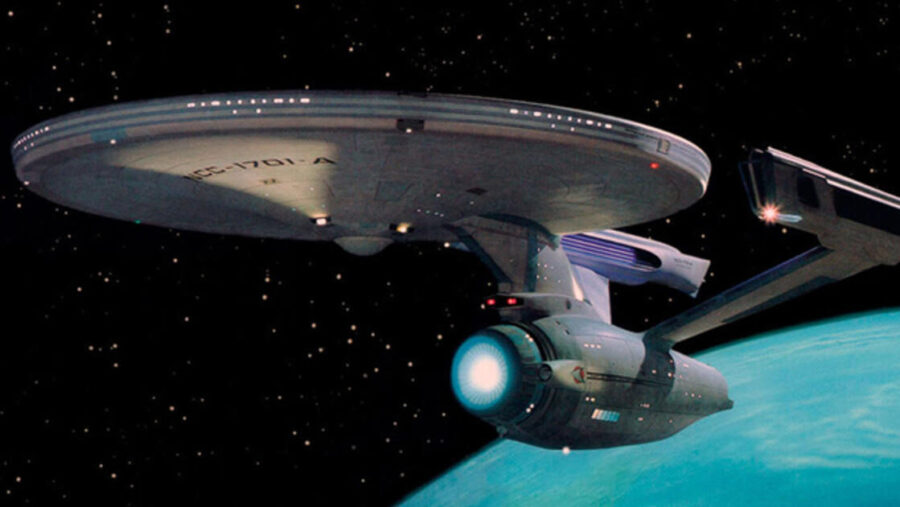
Star Trek is considered one of the geekier science fiction franchises for many reasons, including that our favorite characters are bound by rules they take very seriously.
This includes formal rules like the Prime Directive and cultural rules like the Klingons’ famous code of honor.
However, Star Trek: The Next Generation introduced one major rule that every series in this Paramount Franchise has since ignored, and that’s the warp speed limit.
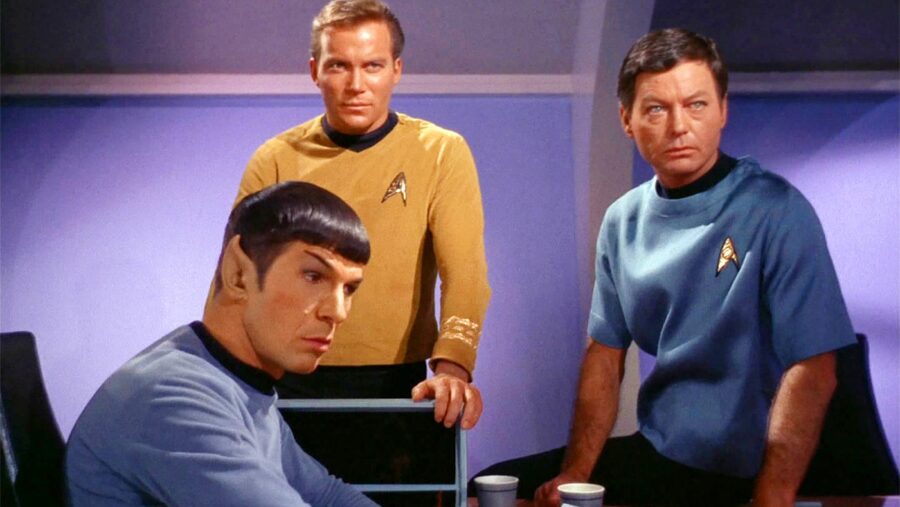
Started In Star Trek: The Original Series
Back in Star Trek: The Original Series, starship captains had to watch how fast they traveled because their warp drives were fueled by rare dilithium crystals that would crystalize and eventually become completely useless.
This was meant as an analog for more familiar resources such as gasoline: ships could only go so far and so fast before they burned through all their dilithium.
Several episodes centered on the need to mine dilithium crystals because they couldn’t be effectively replicated. Original Series fans soon got used to hearing Scotty’s concerns about what Kirk’s misadventures were doing to their stockpile of rare crystals.
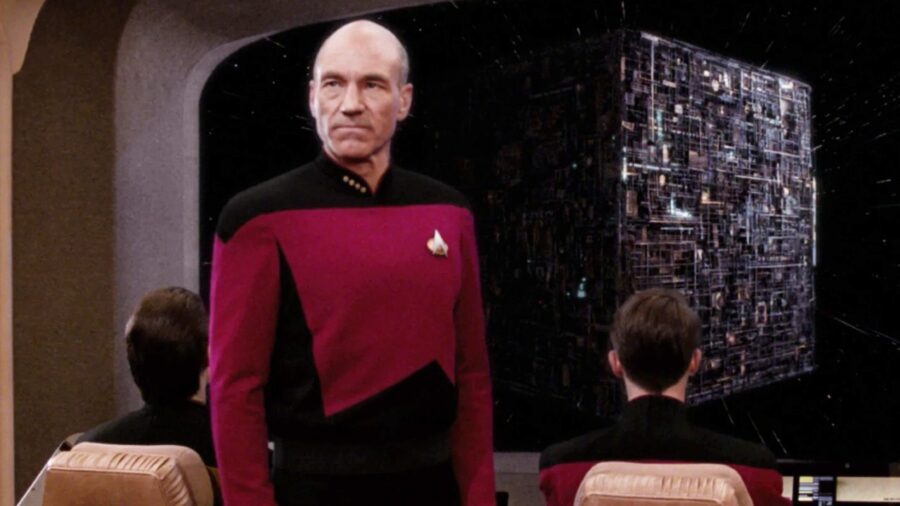
Star Trek: The Next Generation Shows Advancements
Star Trek: The Next Generation showed how much Starfleet technology had advanced over the decades, and one of the biggest advancements was that dilithium crystals could not be recrystallized. It was still important to keep the dilithium from getting damaged.
Still, assuming that didn’t happen, the Enterprise-D could theoretically travel as far and as fast as the captain wanted on the same supply of crystals.
Naturally, fans wondered why the starship wasn’t always traveling at Warp 9, especially when half the crew’s missions involved turning this Federation flagship into a glorified taxi for various ambassadors and dignitaries.
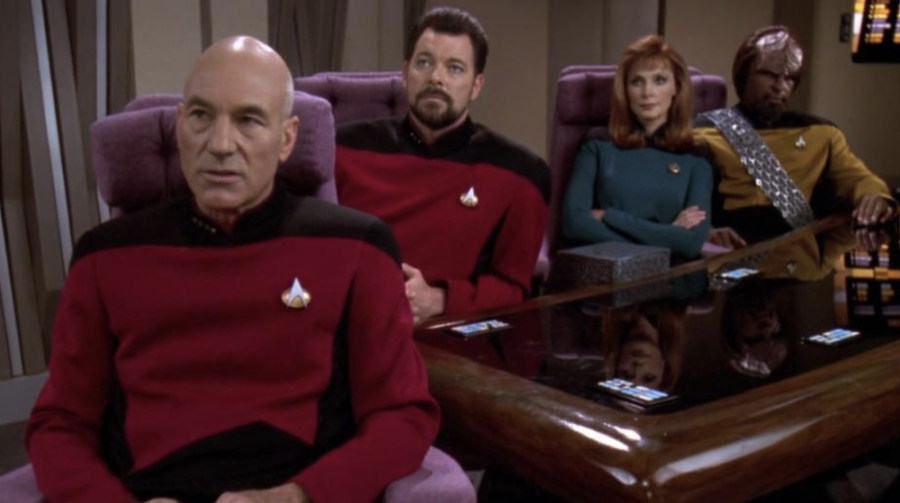
Addressed In Force Of Nature
Eventually, Star Trek: The Next Generation would address the issue (sort of) in the episode “Force of Nature.”
Captain Picard and crew encountered Hekaran scientists who made a bombshell claim: warp fields were actually damaging their intergalactic neck of the woods. And if ships kept traveling at warp, it would someday render their homeworld of Hekaras II completely uninhabitable.
The aliens had previously presented their research to the Federation Science Council, but it was dismissed due to insufficient concrete evidence.
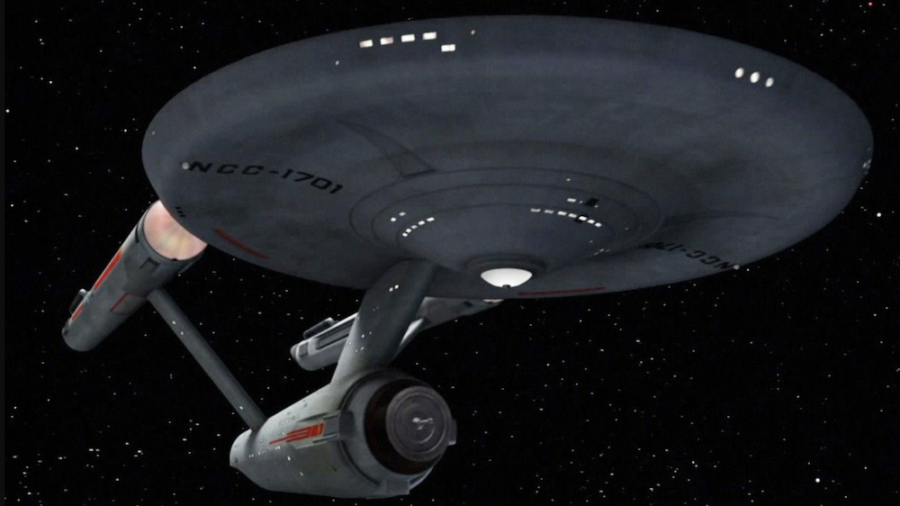
Limited To Warp 5
In that same Star Trek episode, one of the aliens overloaded her own warp core and caused a subspace rift in the Hekaran sector.
It was a highly risky move, but it seemingly proved her point that warp engines were capable of causing damage to the delicate fabric of spacetime.
Due to this, the Federation Science Council instituted a restriction where all Federation vessels were limited to Warp 5 or slower. The idea was that this would slow down the spacetime decay.
And the Federation shared the new research in the hopes that other major powers (such as the Klingons, Romulans, and Cardassians) would abide by this warp speed limit.
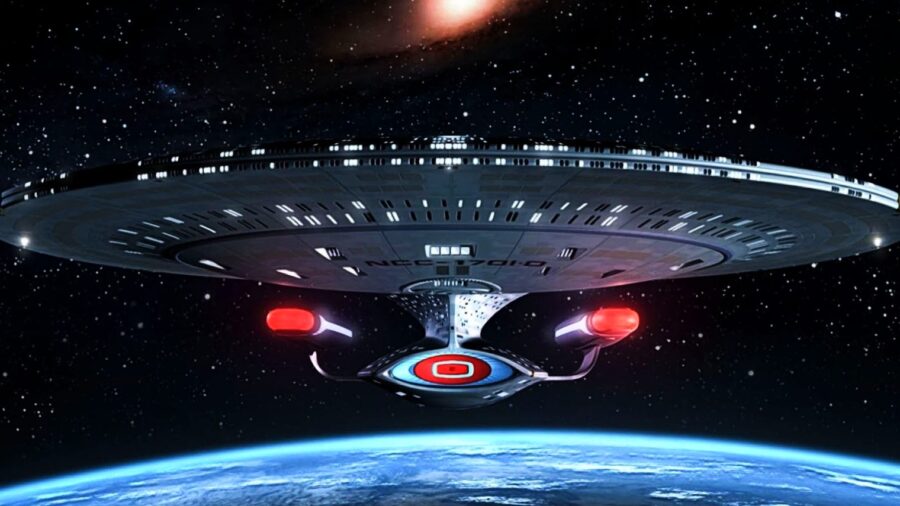
Rug Is Pulled
Starships were still authorized to exceed this speed limit in extreme situations, and a couple of future Star Trek: The Next Generation episodes showed Picard getting authorization to go faster than Warp 5.
However, later shows never again acknowledged this speed limit and the closest thing we got to an official explanation was the Star Trek Encyclopedia claiming that an offscreen solution to the problem must have been discovered.
However, Rick Berman would later give a much more realistic explanation: as reported by What Culture, the producer once said “when you limit warp drive, the rug is being pulled out from under Star Trek.”

Star Trek Says Hit It
In retrospect, it’s easy to see that Berman was right and that a hard warp speed limit would have put an unnecessary limitation on future writers.
Still, it’s fascinating that Star Trek never officially acknowledged how or even if they managed to solve the problem of warp speed damaging space and time.
And now that the franchise mostly focuses on the past with shows like Strange New Worlds, we can’t help but think about what is happening to those poor Hekarans every time Captain Pike orders maximum warp by saying “hit it.”
More for You
Jennie Kim’s Torso Reveal on the 2024 Met Gala Red Carpet Is a Master Class in Confidence
Who Is the Richest Person in the World? Top 10 People by Net Worth in 2024
iOS 17.5 Is Almost Here. Your iPhone Could Get These New Features Soon
Fani Willis' Chances of Losing Primary With 2 Weeks to Election
Map reveals best places to live in the US if nuclear war breaks out
Nuggets star Jamal Murray fined a whopping amount by the NBA
17 Hairstyles Perfect For Older Women Who Want to Look Younger
29-year-old ex-bartender now earns $100,000 working in AI without a college degree—here's how
Chevron CEO reveals when US will see the 'end of the oil age'
Oil prices touch lowest levels since mid-March as Russia signals OPEC+ output rise possible
The best lake towns to live in America all year round, according to data
US and allies accuse Russian man of running ransomware gang that extorted hundreds of millions of dollars from victims
I teach etiquette to people around the world and these are the 7 most basic mistakes made while drinking
17 Well-Paid Remote Jobs You Can Do at Night
Crazy V12-Powered Quad Bike Has Same Performance As A Bugatti Veyron
Feds warn Amazon customers about common scam

Dramatic video shows moment powerful tornado hits hotel
Top 10 most expensive US states to live in – see if yours makes the list
The 38 Most Valuable Toys From Your Childhood That Are Worth a Lot of Money Now
About half of the North Korean missiles Russia fired at Ukraine flew off course and exploded in the air, official says

Maximum warp
- View history
Maximum warp (shortened from maximum warp speed and also known as top warp speed , maximum speed , high warp speed , emergency speed ) was the maximum warp factor velocity a starship was designed for and a term whereby a bridge officer could ask the flight control officer to accelerate the ship to its highest possible velocity.
The maximum warp velocity and the time it could be maintained by a starship varied between classes. This was due to energy output limitations of the warp core and limitations of other systems, such as the warp coils , the structural integrity field , and the amount of energy the propulsion system could handle without overloading . ( ENT : " In a Mirror, Darkly "; DS9 : " The Sound of Her Voice "; TOS : " The Changeling ")
In the early days of warp drive development, the top speed capabilities took massive leaps in the mid- 22nd century after the warp 2 barrier was broken. ( ENT : " First Flight ") The invention of the warp three engine allowed early Earth starships to travel ten times faster, ( ENT : " Fortunate Son ") while ships installed with the warp five engine could travel a hundred times faster. ( ENT : " Broken Bow ") The increase in capabilities slowed down later on, as the Starfleet ships of the 2370s were only twice as fast as the ships used in the 2290s . ( VOY : " Flashback ")
Though originally rated for warp 5, by 2154 the installation of new warp injectors allowed the Enterprise NX-01 to push to warp 5.06. ( ENT : " Babel One ")
In 2256 of an alternate timeline , Captain Michael Burnham from the future had the USS Discovery taken to maximum warp and then had the warp bubble broken. This was a part of Commander Paul Stamets successful attempt to use relativity to break through a temporal shield and remove a time bug . Such a move had the potential to tear the ship apart, but Stamets was able to calibrate the inertial dampeners to compensate, resulting in a jolt, but no other damage to the ship and crew. ( DIS : " Face the Strange ")
In 2268 on stardate 4843.6, it was imperative for the USS Enterprise to proceed at maximum warp speed for a period which exceeded the recommended safety margin in order to intercept an asteroid headed on a collision course with the planet Amerind . Chief Engineer Montgomery Scott noted that they couldn't maintain warp 9 for much longer as the engines began to show signs of stress . ( TOS : " The Paradise Syndrome ")
Galaxy -class ships, such as the USS Enterprise -D , could theoretically achieve warp 9.8, but the maximum warp speeds above 9.6 could be maintained for a few hours only. ( TNG : " Encounter at Farpoint ", " The Best of Both Worlds ") Intrepid -class ships such the USS Voyager , on the other hand, could maintain it from three days up to two months. ( VOY : " Workforce ", " Workforce, Part II ", " Friendship One ")
In 2370 , the Federation imposed a maximum speed limit of Warp 5 on all vessels (except for emergencies) due to concerns over high warp factors causing damage to subspace. ( TNG : " Force of Nature ", " The Pegasus ", " Eye of the Beholder ") This limit would appear to have been temporary.
The Klaestron starship that visited Deep Space 9 in 2369 was said to have a high warp capability, and was able to achieve warp 5 or better. ( DS9 : " Dax ")
The USS Carolina traveled 0.7 light years in two hours when at maximum warp. ( VOY : " Inside Man ")
Even though the Nova -class was designed to travel at a maximum speed of warp factor 8, when the USS Equinox powered its warp drive with energy derived from the corpses of nucleogenic lifeforms , an increase of 0.03% was added to the warp factor, allowing the velocity of traveling ten thousand light years in less than two weeks. ( VOY : " Equinox ")
During its time in the Delta Quadrant , the USS Voyager encountered technologies that enabled it to travel great distances at massively greater speeds than its rated maximum warp velocity, including the quantum slipstream drive , transwarp coil and Tash's catapult . The vessel had arrived in the Delta Quadrant from the Alpha Quadrant , approximately 75,000 light years, via the Caretaker's array . ( VOY : " Hope and Fear ", " Dark Frontier ", " The Voyager Conspiracy ", " Caretaker ")
- 1 Maximum warp limitations by class
- 2.1 Maximum warp requests
- 2.2 Background information
- 4 External link
Maximum warp limitations by class [ ]
- Warp 1.4 † – Arctic One -type
- Warp 1.8 † – Y-class
- Warp 2 † – Neptune -class , J-class
- Warp 3.2 – Defiant -class , USS Valiant had suffered combat damage
- Warp 4 – Whorfin -class † , type 9 shuttlecraft
- Warp 5 – Danube -class
- Warp 5.2 † – NX-class
- Warp 6 † – D5-class , Class III neutronic fuel carrier
- Warp 6 – D'deridex -class , maximum speed that can be used where the use of the Cloaking device is not detected
- Warp 6.5 † – Suurok -class ( Ti'Mur )
- Warp 7 † – Suurok -class ( Sh'Raan ) , Coridan ship
- Warp 8 † – Constitution -class
- Warp 8 – Nova -class
- Warp 8.7 – Baran's mercenary ship
- Warp 9 – Defiant -class ††
- Warp 9.3 – Nebula -class (2368)
- Warp 9.5 – Nebula -class (2370, could be pushed to warp 9.6)
- Warp 9.6 – D'deridex -class , can be exceeded in exchange for engine damage
- Warp 9.8 – Galaxy -class , Xepolite Free Trader
- Warp 9.9 – Prometheus -class
- Warp 9.97 – Protostar -class (with conventional warp drive)
- Warp 9.975 – Intrepid -class
- Warp 9.99 – Constitution III -class
- Warp 36 † – Karla Five's vessel
Appendices [ ]
Maximum warp requests [ ].
- " Where No Man Has Gone Before " (first mentioned)
- " The Corbomite Maneuver "
- " Balance of Terror "
- " The Squire of Gothos "
- " Spock's Brain "
- " That Which Survives "
- " Unnatural Selection "
- " Time Squared "
- " Redemption "
- " The Chase "
- " Descent, Part II "
- " Parallels "
- " Homeward "
- " Lower Decks "
- " Bloodlines "
- " All Good Things... "
- " Whispers "
- " Defiant "
- " The Die is Cast "
- " The Adversary "
- " The Way of the Warrior "
- " Return to Grace "
- " For the Cause "
- " For the Uniform "
- " By Inferno's Light "
- " Soldiers of the Empire "
- " A Time to Stand "
- " Sacrifice of Angels "
- " The Sound of Her Voice "
- " Parallax "
- " Cold Fire "
- " Threshold "
- " Flashback "
- " Macrocosm "
- " Scorpion "
- " Scorpion, Part II "
- " The Omega Directive "
- " Counterpoint "
- " Dark Frontier "
- " Think Tank "
- " Equinox "
- " Equinox, Part II "
- " Tinker Tenor Doctor Spy "
- " Flesh and Blood "
- " Body and Soul "
- " The Aenar "
- " In a Mirror, Darkly "
- Star Trek Generations
- Star Trek: First Contact
Background information [ ]
As noted above, the tolerance of a ship's systems for the stresses of warp travel are a primary limiting factor, so while exceeding the ship's maximum rated speed can be technically possible, it carries the risk of severe damage to the warp drive or to the ship's structural integrity.
When a ship is ordered to accelerate to maximum warp, it does not always mean the absolute highest reachable warp factor. For example, in ENT : " Affliction ", Enterprise NX-01 already travels at maximum warp, but then accelerates to warp 5.2. In both TNG : " Time Squared " and TNG : " Bloodlines ", maximum warp denoted warp 9, although the Enterprise -D was established to be capable of faster speeds in other episodes. A similar situation occurred in DS9 : " The Sound of Her Voice ", when the USS Defiant , traveling at maximum warp, accelerates to warp 9.5.
According to Star Trek Encyclopedia (3rd ed., p. 556) updated with information up to 2375 and Star Trek: Insurrection , warp factor 9.2 was the normal maximum warp speed of Federation starships.
TNG : " Force of Nature " established Warp 5 as the maximum allowable Federation-vessel speed (except in emergencies), due to environmental concerns. Following this episode, the use of the term "maximum warp" became ubiquitous in lieu of a specific warp factor being stated. Even though later episodes and series strongly indicated that the limit was no longer in place (in particular throughout Star Trek: Voyager ), the use of the phrase "maximum warp" has continued, even in series set well before the events of "Force of Nature".
See also [ ]
- Cruising speed
- Emergency warp
External link [ ]
- Warp factor at Memory Beta , the wiki for licensed Star Trek works
- 2 ISS Enterprise (NCC-1701)

Have you ever wondered how long it would really take the Enterprise to travel from Earth to Vulcan at warp 5? Or how far the Defiant could possibly get at warp 9 in just five days? What about figuring out how fast Voyager ’s maximum speed (Warp 9.975) is in multiples of the speed of light? The Warp Speed Calculator is designed to answer these questions. Simply input two of three variables (speed, distance, and time), and the form will calculate the third for you. It will even convert equivalent units, like years to days, light-years to parsecs, or warp factors to multiples of c . And you, too, can sound like a Treknology expert!
Star Trek: When Traveling At Warp, How Do Ships Avoid Collisions?
How the the starships of the Federation stop themselves from playing a deadly game of bumper cars?
When Gene Roddenberry first proposed his revolutionary idea of Star Trek: The Original Series it was unlikely he would ever have imagined how influential the show would become, to the point where modern technology was influenced by the fictional science presented in the show. As a result of the universe expanding, the literal in-world universe keeps getting bigger, with the introduction of new alien races and worlds. To traverse this large and expansive space the writers needed to devise a way to get from point A to B as quickly as possible, and so the warp engine was devised . It does raise a question, though: when traveling at such speeds how do they avoid colliding with things along their journey?
To explore this, it’s important to get at least a vague understanding of how warp works. (This gets even more vague when taking into account the continuity errors shown in Discovery .) The warp drive aboard many ships in the franchise works by creating a warp field that allows the ship to travel faster than the speed of light. This is a very basic explanation of the vast amount of fictional science that goes into how they work. A lot of people jump to the magical science to explain how ships avoid other ships, planets, stars, and other random space detritus, alluding to how the warp drive allows the ship to traverse through non-physical space.
RELATED: Star Trek: How Did Odo Keep His Job After The Occupation Of DS9?
This is a perfectly reasonable explanation, the reality of warp being far from grounded in modern-day theories and science. It only makes sense that in order to travel faster than what is deemed possible (much, much faster than light), the ship transcends into some different layer or space or reality, able to bypass the physical things that get in the way.
The other argument, however, is that ships going at warp do exist in the physical plane. Although neither argument is fully confirmed in the franchise, this latter option seems far more likely following a more realistic train of logic. The reason that ships don’t collide with other things, then, is suggested to be because space is ridiculously big. After all, the universe contains a whole lot of nothing. Douglas Adams summarized this scale best in The Hitchhiker's Guide to the Galaxy :
“Space is big. You just won't believe how vastly, hugely, mind-bogglingly big it is. I mean, you may think it's a long way down the road to the chemist's, but that's just peanuts to space.”
Because of this enormous scale, it would statistically be much harder to actually hit something in space rather than avoiding it. The math supports this too. It is estimated that the distance between stars in the galaxy is around about 4-5 light years. With this in mind, some very clever people have worked out that if a ship were traveling at warp at an average of 100 light years a day, the chance of a ship hitting a star is less than 1 in a hundred trillion. This means that, even with an estimated 10,000 other Federation starships doing the exact same thing, a collision would only happen once every hundred millions years.
This math only takes into account the reality of known stars in the galaxy, but it’s safe to imagine that the statistics would still be staggeringly in favor of a starship to avoid planets as well (which are, on average, only a tiny fraction the size of a star) and other space debris. The irony here is that it would seem far more likely for a ship to be unable to find their destination than it would be for them to accidentally collide with something.
While the odds are very much in favor of blindly (and boldly) traveling in warp without the fear of hitting something, the Federation does have many tools in its arsenal to help ensure this will never happen. Rather than selecting a destination on their intergalactic map and pressing ‘go,’ the ships in Star Trek always have a navigator plotting a course through space, as well as an incredibly advanced computer to stop these 1-in-a-hundred-trillion collisions from happening. The navigator might plot a course that avoids a particularly turbulent area of space, or that avoids any large clustering of asteroids or space stations. Most of this would be done automatically by the computer, making slight adjustments while in warp to shimmy past any new dangers their long-range sensors could detect.
The sensors themselves are worth noting here as well, as Starfleet's spaceships are often traversing space that is not yet explored (particularly in the mixed-reviewed show Voyager ). Thus, a reliable and detailed map of any potential obstacle would not have been recorded. The navigational sensors, then, are vital, powerful enough to not only scan a large area of space when the ship is at a standstill but also actively update the ship's intergalactic map while at warp. These sensors make sure to avoid any new small thing automatically or alert the navigator to any larger obstacles or things of intrigue along the way.
The only other thing that could present a threat to the ship when traveling through space at such speed would be smaller rocks or space debris, something that poses a real threat to modern-day spaceships (shown dramatically in the movie Gravity ). However, these things would likely not pose a threat to the federation ships. The Enterprise and its ilk are equipped with what is known as a navigational deflector shield, which is designed to deflect and move small objects out of the ship's path. The only issue with this is that other than this description they may as well work by magic, as the science behind them is never fully fleshed out.
MORE: Star Trek: Roddenberry’s Representations Of God And The Devil
Scientists Are Getting Closer to a Real, Working Warp Drive
A crucial development is propelling engineers toward faster-than-light travel.

- If humanity wants to be a spacefaring species, it needs to figure out how to travel faster than the speed of light.
- Now, a new online toolkit — backed up by a $500,000 grant — will help engineers kickstart how humanity can achieve its faster-than-light dreams in reality.
- This toolkit was created by Applied Physics, an international group of scientists, which hopes to also provide a "reality check" on warp drive concepts that rely on exotic physics.
The galaxy—let alone the universe—is a stunningly huge place. Containing anywhere from 100 billion to 400 billion stars (and by extension trillions of planets), the Milky Way is a stunning 100,000 light years across. That means a trans-galactic photon that just exited the Milky Way today likely began its journey when Homo sapiens had yet to migrate out of Africa, and that’s traveling at roughly 670 million miles per hour. Considering the velocity limitations of our rockets, it takes roughly half a human lifetime just to exit our solar system.
Simply put, if humans want to be a spacefaring species, we’re going to need something better than chemical — or even nuclear — rockets, and for decades, it’s science fiction that has held the answer. The most famous example is Star Trek , which relies on the power of its warp drive to traverse the galaxy in a fraction of the time. Galactic journeys that once took centuries could now be wrapped up in a couple of hours.
Scientists have longed for some sort of technology that can propel humans faster than what physics says is possible, and now a new online tool is helping engineers make a warp drive the sole property of Starfleet. Last week, Applied Physics, which is an international group of scientists and engineers, announced that they’d created an online toolkit for “analyzing warp drive spacetimes” called the “Warp Factory.”
“Physicists can now generate and refine an array of warp drive designs with just a few clicks, allowing us to advance science at warp speed," Gianni Martire, CEO of Applied Physics, said in a press statement . “Warp Factory serves as a virtual wind tunnel, enabling us to test and evaluate different warp designs. Science fiction is now inching closer to science fact.”
As Public Benefit Company, Applied Physics is ponying up $500,000 in potential grants for aspiring warp drive theorists. However, those grants come with a few caveats, mainly that the idea is to produce a physical warp drive based in classical relativity, which means not relying on “negative energy or superluminal matter” to make your time-bending engine work.
AP’s Christopher Helmerich, in an interview with The Debrief , also compared the Warp Factory as a “reality check” for warp drives as concepts can be analyzed in a comprehensive way and hopefully weed out ideas that have no chance of operating in the real world.
While a fully working warp drives has many hurdles to overcome, it’s a technology worth taking seriously. Because if humans have any hope of one day exploring distant stars, it’ll need the help of space-bending tech that the newly-minted Warp Factory hopes to nurture.
Darren lives in Portland, has a cat, and writes/edits about sci-fi and how our world works. You can find his previous stuff at Gizmodo and Paste if you look hard enough.

.css-cuqpxl:before{padding-right:0.3125rem;content:'//';display:inline;} Rockets .css-xtujxj:before{padding-left:0.3125rem;content:'//';display:inline;}
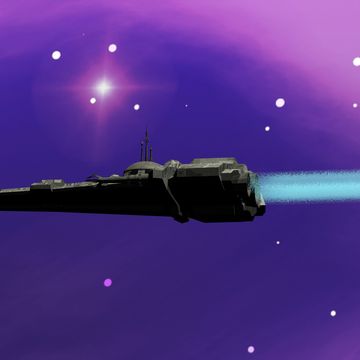
An Engineer Says He’s Overcome Earth’s Gravity
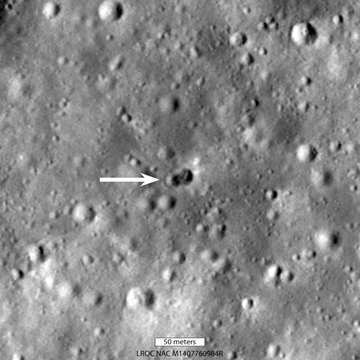
A Chinese Rocket Took an Unknown Item to the Moon

The Pentagon Really Wants a Nuclear Spacecraft
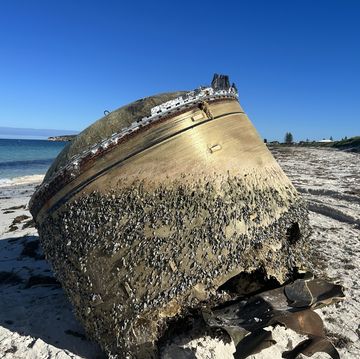
Cylinder on Australian Beach is Part of a Rocket
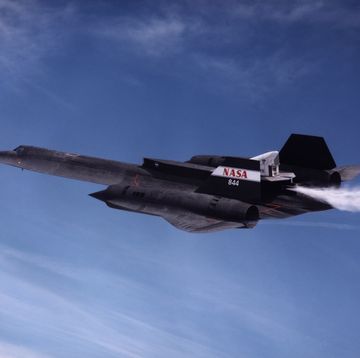
Why the Aerospike Engine Is the Future of Rockets

After 70 Years, Will Aerospike Engines Fly?

Is Fusion the Future of Space Exploration?

Astronauts Might be Able to Hibernate in 10 Years

SpaceX Blew Up Their Own Launch Pad
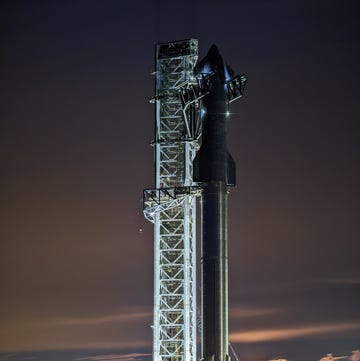
Welp, SpaceX’s Starship Just Blew Up
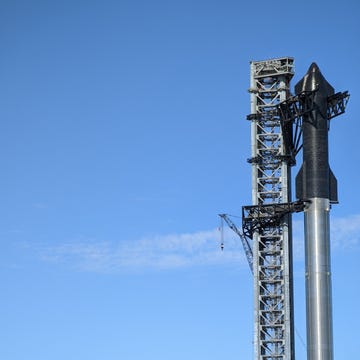
Bummer: SpaceX Canceled Today’s Starship Launch

COMMENTS
Similarly in a 70 degree room, it takes more energy to raise an objects temperature from 100 to 101 than it does from 70 to 71. So one may conclude that the energy cost to travel at higher warp speeds is similarly higher, and thus running at warp 9 would burn up the crystals 3 or 4 times as fast as running at, say, warp 6.
Creates more wear on the warp coils. Warp 1 means you wont have to replace the coils for 8 years. Constantly going at Warp 9 means they will have to be replaced every 1.5 years. It is also far quicker for a ship to jump to lower Warp speed than a higher one.
That is not how star trek engines work. The concept of the warp engine is that they are creating a field around the ship which is technically a different universe. This allows the the speed of light to be broken but requires that the field be constantly engaged. If you cut the engines you cut the field and will automatically drop out of warp. 2.
The power consumption likely increases by a magnitude for every warp factor increase. Maybe like when approaching light speed, it cost twice (+200%) as much power for every +50% increase in speed. Same reason you don't always drive your car at 100mph. It's extremely hard on the engine.
Even the Enterprise-D incurred some engine damage zipping along at Warp 9 for an extended period of time in "The Chase." For many ships, Warp 6 might be the top speed a ship can maintain without eventually burning out the engines.
Mar 30, 2006. Soong-type Android said: ↑. Of course unlike a car the fictional starship has the benefit of operating in three dimensions in an infinite area where the laws of physics don't apply to it. It begs the question of how long a starship could travel at warp 9.9 without blowing up.
Warp 9 is approximately 729c. So, Warp 9 is approximately 3.375x faster than Warp 6. A system with even, say, 80% thermodynamic efficiency (only 20% lost to entropy) would have to put roughly 25% more energy in than it saw in returns, so travelling at Warp 9 would cost approximately 4.2 times as much energy as travelling Warp 6, for only 3 ...
Warp drive can get ships to light speed and faster in the Star Trek world but space is still HUGE. The Milky Way galaxy is 100,000 light years across so, even at Warp 9, it would take the Star ...
The warp scale is continuous, meaning that real numbers such as "Warp 8.179" are possible, although it seems that starships most often travel at integer warp factors 7, 8, 9, etc. Warp factors below Warp 1 are occasionally mentioned in Star Trek, mostly in the scope of the 24th century scale. Consequentially these refer to sublight speeds.
This is covered in the Next Gen Star Trek Technical manual. The warp scale got recalibrated between TOS and TNG. Warp 9 in TNG is staggeringly faster than warp 9 in TOS. My headcanon is that it changed due to the Excelsior class, what with the TOS films describing it as having a "transwarp" drive.
Time-Warp factor, better known as warp factor, was the primary means of measuring speeds attained using warp drive. (TOS: "The Cage") The term was often shortened to warp when followed by its value, so that saying "warp six" was the same as saying "warp factor six." Light speed travel began at warp one, whereas lower fractional values sometimes measured sublight speeds or sublight factors ...
12 October 2019. In the sci-fi universe of "Star Trek", spaceships with warp drives can zoom past the normally impenetrable limit of light speed, or about 186,282 miles per second (299,792 kilometers per second) in a vacuum. This trouncing of theoretical physics makes reaching alien-rich planets across the galaxy seem like just a convenient TV ...
Subject: Re: Star Trek Warp. To: Yar of Spit. The warp factors we've used in ST:TNG were computed in an arbitrary way to fit some specific characteristics we needed. First, the speed for any given warp factor had to be greater than it was in the original Star Trek series. This was primarily to satisfy fan expectations.
Naturally, fans wondered why the starship wasn't always traveling at Warp 9, especially when half the crew's missions involved turning this Federation flagship into a glorified taxi for ...
ADMIN MOD. Why don't they always floor it at Warp 9? In Star Trek: The Next Generation, it often seems like a somewhat difficult call when Picard orders the helmsman to travel at high Warp. I would presume that various factors such as systems strain, cooling and fuel efficiency all play a part, but I am curious as to whether this is ever ...
When a ship is ordered to accelerate to maximum warp, it does not always mean the absolute highest reachable warp factor. For ... p. 556) updated with information up to 2375 and Star Trek: Insurrection, warp factor 9.2 was the normal maximum warp speed of Federation starships. TNG: "Force of Nature" established Warp 5 as the maximum allowable ...
The Warp Speed Calculator is designed to answer these questions. Simply input two of three variables (speed, distance, and time), and the form will calculate the third for you. It will even convert equivalent units, like years to days, light-years to parsecs, or warp factors to multiples of c. And you, too, can sound like a Treknology expert ...
The warp drive aboard many ships in the franchise works by creating a warp field that allows the ship to travel faster than the speed of light. This is a very basic explanation of the vast amount ...
Presumably earlier in the show it was to save wear on the equipment. There was also an episode in TNG that showed that warp drive was damaging space and too much warp travel in an area could open a rift in space. Because of this Starfleet limited the speed ships were allowed to travel outside of an emergency.
The most famous example is Star Trek, which relies on the power of its warp drive to traverse the galaxy in a fraction of the time. Galactic journeys that once took centuries could now be wrapped ...
I'm not a big Star Trek guy but I like saying warp factor. At Tennessee Volunteers (Oct. 12) — Warp Factor 12. ... Ok, it's a tie on the warp factors because LSU always find a way to win in Gainesville taking four of the last five (although one of the wins was vacated last year).
voyager is the only ship that was designed for sustained high warp. There is indications in TNG and other series that the higher speeds cause wear or damage to ship systems. in TNG "Speed Limit" it is discovered that frequent high warp travel through the same space repeatedly damages subspace and can cause subspace rifts. Reply.